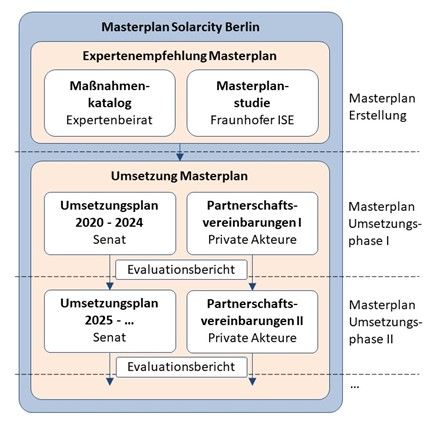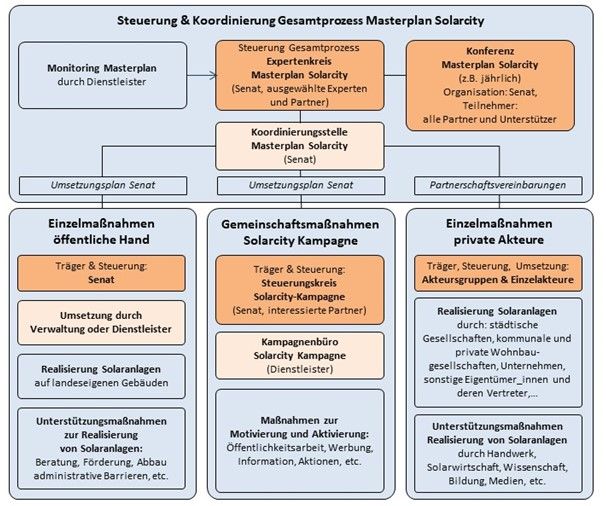| Duration: | 10/2018 - 12/2019 |
| Contracting Authority/ Sponsors: | Senatsverwaltung für Wirtschaft, Energie und Betriebe Berlin |
| Project Partners: | Zebralog |
| Website: | Solarcity Berlin |
| Project Focus: | |
Solarcity Berlin – Masterplan Solarcity Berlin



Berlin has set itself the goal of becoming climate-neutral by 2050. The extensive use of solar energy is an important component of this. The Berlin Energy and Climate Protection Program 2030 stipulates the creation of a Solarcity Berlin master plan that will enable solar potential to be tapped as quickly as possible. The Berlin agency “Zebralog” and the Fraunhofer Institute for Solar Energy Systems (ISE) were commissioned by the Senate Department for Economics, Energy and Public Enterprises to work with a group of experts to develop a catalog of measures to accelerate the development of PV potential.
At the start of the project in 2018, photovoltaic (PV) systems with an output of 106 MWp were installed in Berlin, covering 0.7 percent of electricity consumption. The aim of the Solarcity master plan is to significantly accelerate solar expansion in Berlin in order to increase the share of solar power to 25% by 2050 at the latest. This requires the installation of PV systems with an output of 4,400 MWp. As this target corresponds to half of the technical solar potential, achieving it is considered realistic.
At 28 watts, Berlin has significantly less PV power installed per inhabitant than the national average of 546 watts. This is mainly due to the fact that the installation of solar systems in Berlin is more expensive and financially less attractive than in the south of Germany and in rural areas. At the same time, Berlin, with its high proportion of tenants, is disadvantaged by federal legislation, as the tenant electricity subsidy is significantly lower than the use of solar power from the roof of owner-occupied property. Successful implementation of the master plan therefore requires both strong initiatives in Berlin and, above all, improvements to the legal framework at federal level. In the study, a stakeholder analysis is carried out in order to be able to analyze even more precisely which building owners and users of the buildings are present so that the measures developed can be tailored to them.
A total of 27 measures are being developed, which are divided into various fields of action such as information, advice, advertising and public relations, economic efficiency, removing barriers, strengthening the skilled trades and solar industry, as well as other fields of action.
